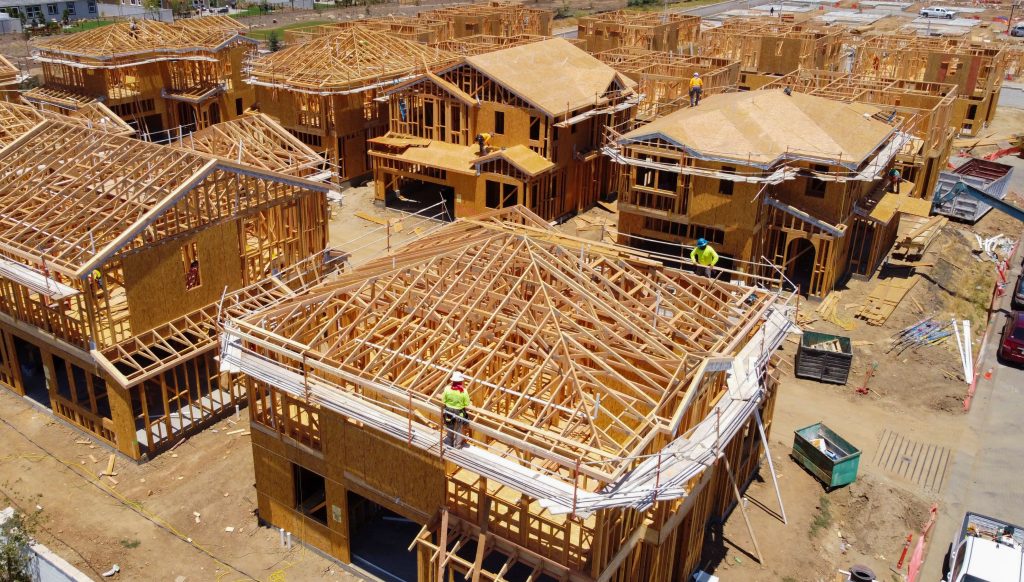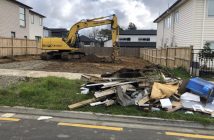Following an extended period of elevated development activity across New Zealand, Colliers expects new building construction to fall to its lowest levels since the Global Financial Crisis within the next 12 months

A confluence of mounting challenges has resulted in a marked slowdown in development activity over recent months.
A combination of factors such as higher interest rates, a more stringent lending environment, elevated build costs and a cooling economic backdrop, have increased the difficulty of achieving development feasibility.
However, the lack of building now will likely lead to availability constraints when conditions improve, repeating challenges of the past.
Constraints force developers to take a cautious approach
The deceleration in activity can be attributed to a range of factors. The most prominent is the amplified cost of financing and reduced access to funding. Interest rates have surged at an unprecedented pace as the Reserve Bank seeks to curb inflation. Consequently, financiers have adopted a more cautious lending stance, making it harder for developers to secure funds for their projects.
Another pivotal factor contributing to the slowdown is the substantial escalation of construction costs. Escalating material expenses, disruptions in supply chains, and a shortage of skilled labor have all driven up construction expenditures. The challenge of achieving project viability is compounded by the cooling economic climate, which renders an increasing number of businesses sensitive to rising rental costs. This situation frequently compels developers to re-evaluate the feasibility of their projects, potentially resulting in delays or cancellations.
Data suggests activity could slow further
Building consent data clearly illustrates a significant loss of momentum within the residential apartment and industrial sectors.
Measured over a six-month rolling period, consent issuance for apartment developments in New Zealand reached a cyclical peak in January 2023, with the approval of 2,793 apartments – the highest figure since May 2005. Subsequently, consents have fallen sharply and by June this year were down by nearly 50%.
The cyclical peak for industrial sector consent issuance was reached in the six months ending March 2022, when the total floor area consented reached its highest level this century. However, recent months have seen a substantial decline in new consents, with the June figure dropping by 37% from the peak.
While office and retail consents tend to be more volatile due to the significant impact of a few large projects which have longer development timeframes and lag in dataflows, other indicators unmistakably demonstrate the deceleration in development activity.
Recent data from Statistics New Zealand reveal a decline in ready mix concrete production, underscoring the sluggishness in the construction sector. In the year ending June 2023, production dropped by 4.2% compared to the record high of the preceding 12 months. Quarterly figures depict an accelerating decline, with June 2023 production down by 10.9% year-on-year.
Anticipating future imbalances
While the current slowdown poses challenges, a more profound shift might await New Zealand’s real estate landscape in the future. The slowdown in development, if sustained, could lead to a supply-demand imbalance, particularly within subsectors in which occupier demand remains evident.
These supply-demand imbalances are likely to emerge first within the residential and industrial sectors followed by the prime end of the office market. This will clearly provide opportunities for experienced and well-financed developers.
Emerging shortages to underpin development
A sharp rebound in migration is bolstering demand for housing just as development slows, mirroring the situation which arose post the GFC which triggered a surge in property prices and rents, exacerbating affordability issues. Avoiding a repeat of this scenario will require collaboration between policymakers, developers, and investors. Mitigating bureaucratic constraints and minimizing the financial burdens on developers would clearly be of benefit.
This could involve a comprehensive assessment of development levies, potentially considering temporary or permanent adjustments. Stimulating investment in the Build-to-Rent sector by removing obstacles to overseas investment could significantly accelerate expansion within the sector. Furthermore, embracing an escalated adoption of cost-effective building technologies, including modular construction, holds substantial potential for increasing project feasibilities.
Demand for industrial premises has remained strong, particularly from an expanding logistics sector. Despite this and regardless of rapidly rising rents, developers are encountering mounting challenges in rendering projects financially viable.
In addition to the general constraints discussed earlier, most established precincts are grappling with land shortages, resulting in significant value increases in recent years. Consequently, maximizing the utilization of land parcels has become increasingly crucial to make new projects feasible. This is being achieved by increasing cubic capacity rather than merely expanding floor areas. The rise in stud heights accompanies the adoption of automated loading and collection technologies, making taller racking systems feasible.
Feasibility for large-scale office projects remains a challenge given the economic backdrop and evolving work practices. However, the demand for high-quality, environmentally sustainable premises in prime locations endures. This demand continues to underpin development intentions, albeit with investors and developers adopting a longer-term outlook. This is exemplified by a recent joint venture partnership formed to invest in the regeneration of Auckland CBD’s Te Tōangaroa precinct. The collaboration includes Precinct Properties, PAG, and Ngāti Whātua Ōrākei.
The joint venture will focus on repositioning assets and enhancing the Te Tōangaroa precinct. The land will remain under the ownership of Ngāti Whātua Ōrākei, while the investment partnership will hold a 123-year prepaid ground lease. This pre-payment mitigates uncertainties surrounding future ground rent increases, a concern that has impeded investment in premises located on leasehold land in other areas.
Momentum will return to New Zealand’s development cycle
While the prevailing slowdown has some way to run yet, a return to an increased level of development will clearly occur in the future. The convergence of factors that precipitated the current deceleration – from elevated costs and cautious financing to economic cooling – has led to a period of adjustment. However, history demonstrates that development cycles are intrinsic to the industry.
The combination of enduring demand, an easing of current constraints, and the increased adoption of innovative technology will lay the foundations for the cycle to shift once again, leading to a renewed upswing in development activity.






